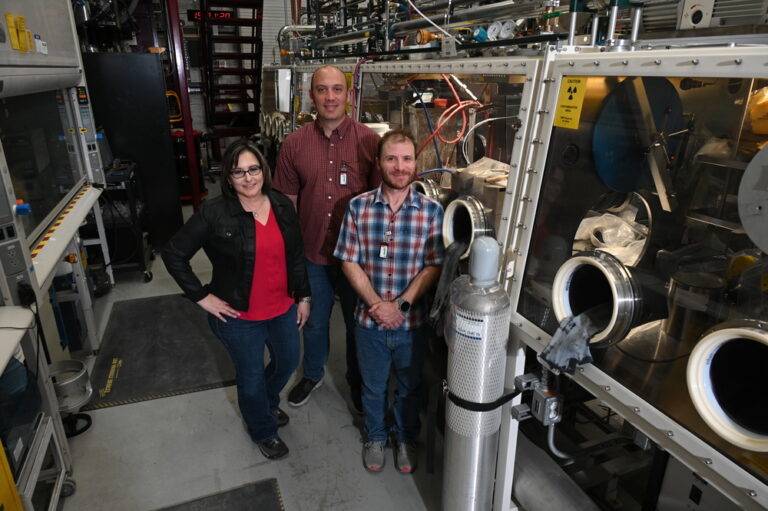ANS issues standard for nuclear power plant applications
ANSI/ASME/ANS RA-S-1.2-2024, Severe Accident Progression and Radiological Release (Level 2) PRA Standard for Nuclear Power Plant Applications for Light Water Reactors (LWRs), received the approval of the American National Standards Institute (ANSI) on May 31, 2024, and was issued on June 17, 2024.
ANSI/ASME/ANS RA-S-1.2-2024 is available in the ANS Online Store.
ANSI/ASME/ANS RA-S-1.2-2024 is a joint standard developed by the American Nuclear Society and the American Society of Mechanical Engineers under the ASME/ANS Joint Committee on Nuclear Risk Management (JCNRM).
This standard is a revision of ASME/ANS RA-1.2-2014 (previously designated ANS-58.24) issued for trial use and pilot application (TUPA). After a two-year TUPA period, all comments received were collected and resolved by the Level 2 Working Group.
In addition to resolving comments received during the TUPA period, this standard incorporates ballot comments received from JCNRM members, including a number of changes to support self-consistency as well as consistency with other JCNRM standards.
Scope: The scope of ANSI/ASME/ANS RA-S-1.2-2024 is limited to analyzing the progression of severe accidents from the onset of core damage through radionuclide release to the environment or a determination that a release to the environment will not occur. It includes the analysis of the various phenomena that occur inside the reactor vessel, the containment structure, and neighboring structures that might participate in the radiological release pathway to the environment. This analysis involves carrying the postulated accident sequences from a Level 1 probabilistic risk assessment (PRA) through a probabilistic logic structure such as a containment event tree (CET) (or equivalent) and determining the radionuclide release characteristics (e.g., magnitude and timing) for the various pathways through the CET.
The scope of this standard includes accident sequences initiated by internal events, internal hazards, and/or external hazards addressed in ANSI/ASME/ANS RA-S-1.1-2024, Standard for Level 1/Large Early Release Frequency Probabilistic Risk Assessment for Nuclear Power Plant Applications. It also includes postulated accident sequences initiated from all modes of reactor operation (at-power, shutdown, and transition states) addressed in ANS/ASME-58.22-2014, Requirements for Low Power and Shutdown Probabilistic Risk Assessment (issued for TUPA).
Reactor fuel: The assessment of radiological releases is restricted to radionuclides that originate in fuel located within the reactor pressure vessel. It does not address spent fuel pool radionuclide release or releases related to purposeful human-induced security threats (e.g., sabotage); this limited scope is consistent with that of ANSI/ASME/ANS RA-S-1.1-2024. ANSI/ASME/ANS RA-S-1.2-2024 is limited in scope to single-reactor accidents and does not address accident sequences involving releases and interactions among multiple reactor units and fuel storage facilities, such as those that occurred at Fukushima Daiichi during March 2011. However, the standard does provide requirements regarding the status of any other units on-site (e.g., status of shared systems inherited from the Level 1 PRA). As such, multiunit issues are treated to a limited extent, broadly consistent with ANSI/ASME/ANS RA-S-1.1-2024; but combined accident sequences, multiple simultaneous releases from multiple units and radiological sources, and more complex multiunit issues and interactions are not addressed within this standard.
Changes: ANSI/ASME/ANS RA-S-1.2-2024 is a substantial revision of the 2014 TUPA version of this standard. The following are major modifications included in the 2024 version:
- The Level 3 Interface Technical Element has been removed on the basis that ASME/ANS RA-S-1.3-2017, Standard for Radiological Accident Offsite Consequence Analysis (Level 3 PRA) to Support Nuclear Installation Applications (TUPA standard), includes all necessary requirements to properly transfer information from a Level 2 PRA. Supporting Requirements (SRs) with “No Requirement” for Capability Category I have been redefined in such a way that it is now clear what the requirements are to meet each Capability Category.
- SRs that reference back to the Level 1 Standard, ANSI/ASME/ANS RA-S-1.1-2024, have been made more consistent, deliberate, and explicit in each part to facilitate the peer-review process.
- Part 1 has been substantially revised in order to be consistent with ANSI/ASME/ANS RA-S-1.1-2024 and includes revised definitions of significance, new sections dedicated to Configuration Control and Newly Developed Methods, and a nonmandatory appendix (NMA) that defines all action verbs used in the standard.
- Capability Category III has been removed across the board on the basis that Capability Category II already envisions refined analysis and realism implemented for the risk-significant elements. Going beyond this, while not discouraged, is not something that needs to be codified in a standard that is supposed to identify the minimum requirements for a technically adequate analysis.
- A number of changes have been implemented to strengthen the consistency among technical elements that are cross-cutting through different standards developed by the JCNRM. These changes required, for example, revisiting SRs associated with screening, uncertainty, human reliability analysis, and documentation.
- Notes and commentaries have been revised to ensure their content is still up-to-date and, for the most part, have been removed from the body of the standard and relocated to the NMA. This relocation emphasizes the concept that notes and commentaries do not represent formal requirements of this standard and are provided for information. References are also removed from individual SRs and moved to notes as one way to meet the SRs.
Usage: ANSI/ASME/ANS RA-S-1.2-2024 was written for operating LWR power plants. Requirements in this standard may be used for LWR plants under design or construction or for advanced LWRs, but revised or additional requirements may be needed.
Note: The JCNRM is a collection of committees with more than 200 professionals in the industry from four continents and spanning the extensive interdisciplinary breadth needed for the development of multihazard, full-scope, comprehensive risk assessments.


